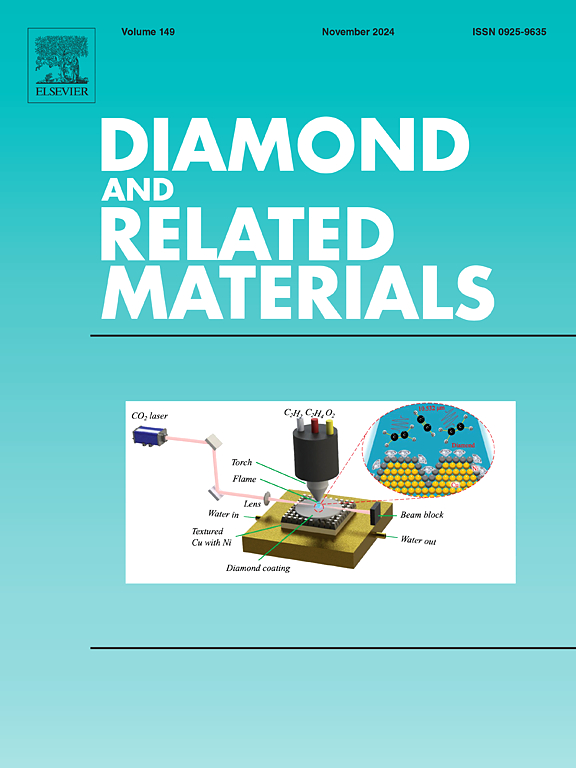The influences from CrN transition layer thickness to the tribological and corrosion performance of DLC films
IF 4.3
3区 材料科学
Q2 MATERIALS SCIENCE, COATINGS & FILMS
引用次数: 0
Abstract
The CrN hard interlayer can enhance the performance of DLC (Diamond-Like Carbon) films; however, it simultaneously introduces internal stress and nitrogen (N). To elucidate its effects, this study employs the non-equilibrium magnetron sputtering technique to prepare DLC films on 316 stainless steel substrates with and without CrN transition layers of 0.4, 0.8, and 1.2 μm thicknesses, respectively. The morphology, phase composition, adhesion strength, hardness, wear resistance, and corrosion resistance of the prepared films were systematically investigated using SEM, XRD, TEM, Raman spectroscopy, scratch testing, nanoindentation, micro-hardness, electrochemical workstation, and wear testing. With increasing CrN transition layer thickness, the CrN XRD peak shifts to higher 2θ angles accompanied by a broadening FWHM, indicative of enhanced compressive stress, while residual nitrogen incorporation and elevated deposition temperatures synergistically promote sp2 content in DLC films. Comparing among all films, the film with a 0.8 μm CrN transition layer (C3) exhibited the lowest stable friction coefficient and the smallest wear rate (one third of the one without CrN layer), characterized by mild abrasive wear. Additionally, in Tafel curve, the corrosion current density of C3 is 1/4 of that for the C1 sample. However, as the CrN layer thickness increases further from 0.8 to 1.2 μm (C4), the coated surface exhibits the worst tribological performance, likely due to excessive stress concentration and micro-cracking in the CrN layer. This systematic study provides insights into the performance and design of wear- and corrosion-resistance Cr/CrN/DLC films.

CrN 过渡层厚度对 DLC 薄膜摩擦学和腐蚀性能的影响
CrN硬夹层可以提高DLC(类金刚石碳)薄膜的性能;然而,它同时引入了内应力和氮(N)。为了阐明其影响,本研究采用非平衡磁控溅射技术在316不锈钢衬底上制备了厚度分别为0.4、0.8和1.2 μm的CrN过渡层。采用SEM、XRD、TEM、拉曼光谱、划痕测试、纳米压痕测试、显微硬度测试、电化学工作站测试、磨损测试等方法对制备膜的形貌、相组成、附着强度、硬度、耐磨性、耐蚀性等进行了系统的研究。随着CrN过渡层厚度的增加,CrN XRD峰向更高的2θ角偏移,FWHM变宽,表明压缩应力增强,同时残余氮的掺入和沉积温度的升高协同提高了DLC薄膜中sp2的含量。与所有薄膜相比,有0.8 μm CrN过渡层(C3)的薄膜具有最低的稳定摩擦系数和最小的磨损率(仅为无CrN过渡层的三分之一),具有轻度磨粒磨损的特征。另外,在Tafel曲线中,C3的腐蚀电流密度是C1的1/4。然而,当CrN层厚度从0.8 μm进一步增加到1.2 μm (C4)时,涂层表面表现出最差的摩擦学性能,这可能是由于CrN层中过度的应力集中和微裂纹。本系统的研究为耐磨损和耐腐蚀Cr/CrN/DLC薄膜的性能和设计提供了见解。
本文章由计算机程序翻译,如有差异,请以英文原文为准。
求助全文
约1分钟内获得全文
求助全文
来源期刊

Diamond and Related Materials
工程技术-材料科学:综合
CiteScore
6.00
自引率
14.60%
发文量
702
审稿时长
2.1 months
期刊介绍:
DRM is a leading international journal that publishes new fundamental and applied research on all forms of diamond, the integration of diamond with other advanced materials and development of technologies exploiting diamond. The synthesis, characterization and processing of single crystal diamond, polycrystalline films, nanodiamond powders and heterostructures with other advanced materials are encouraged topics for technical and review articles. In addition to diamond, the journal publishes manuscripts on the synthesis, characterization and application of other related materials including diamond-like carbons, carbon nanotubes, graphene, and boron and carbon nitrides. Articles are sought on the chemical functionalization of diamond and related materials as well as their use in electrochemistry, energy storage and conversion, chemical and biological sensing, imaging, thermal management, photonic and quantum applications, electron emission and electronic devices.
The International Conference on Diamond and Carbon Materials has evolved into the largest and most well attended forum in the field of diamond, providing a forum to showcase the latest results in the science and technology of diamond and other carbon materials such as carbon nanotubes, graphene, and diamond-like carbon. Run annually in association with Diamond and Related Materials the conference provides junior and established researchers the opportunity to exchange the latest results ranging from fundamental physical and chemical concepts to applied research focusing on the next generation carbon-based devices.
 求助内容:
求助内容: 应助结果提醒方式:
应助结果提醒方式:


